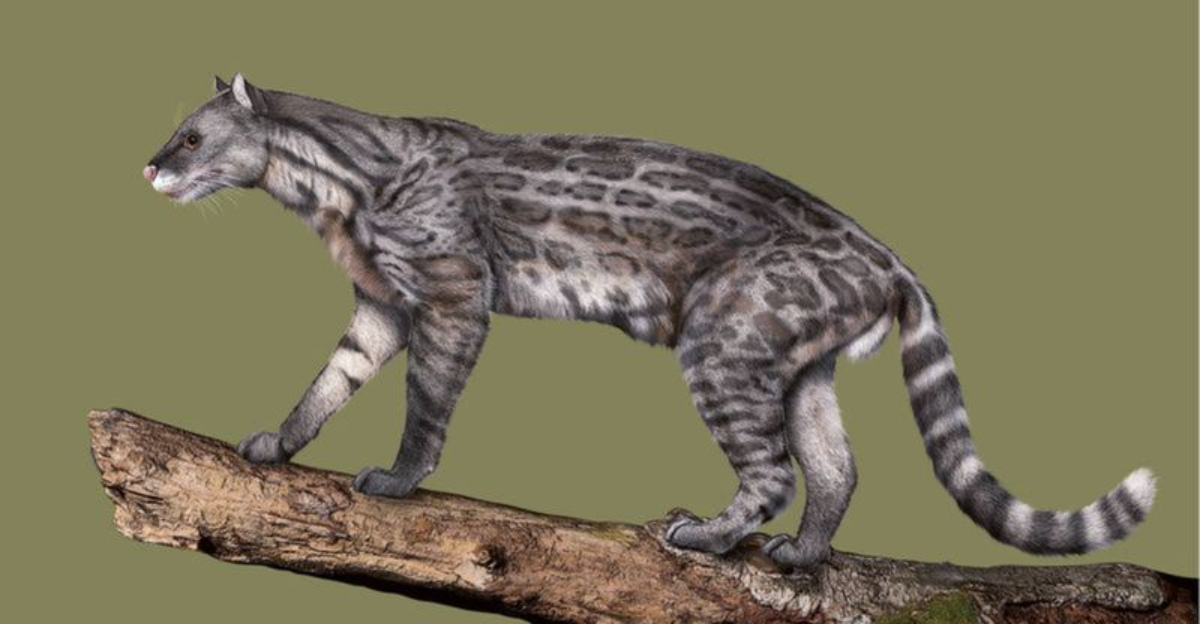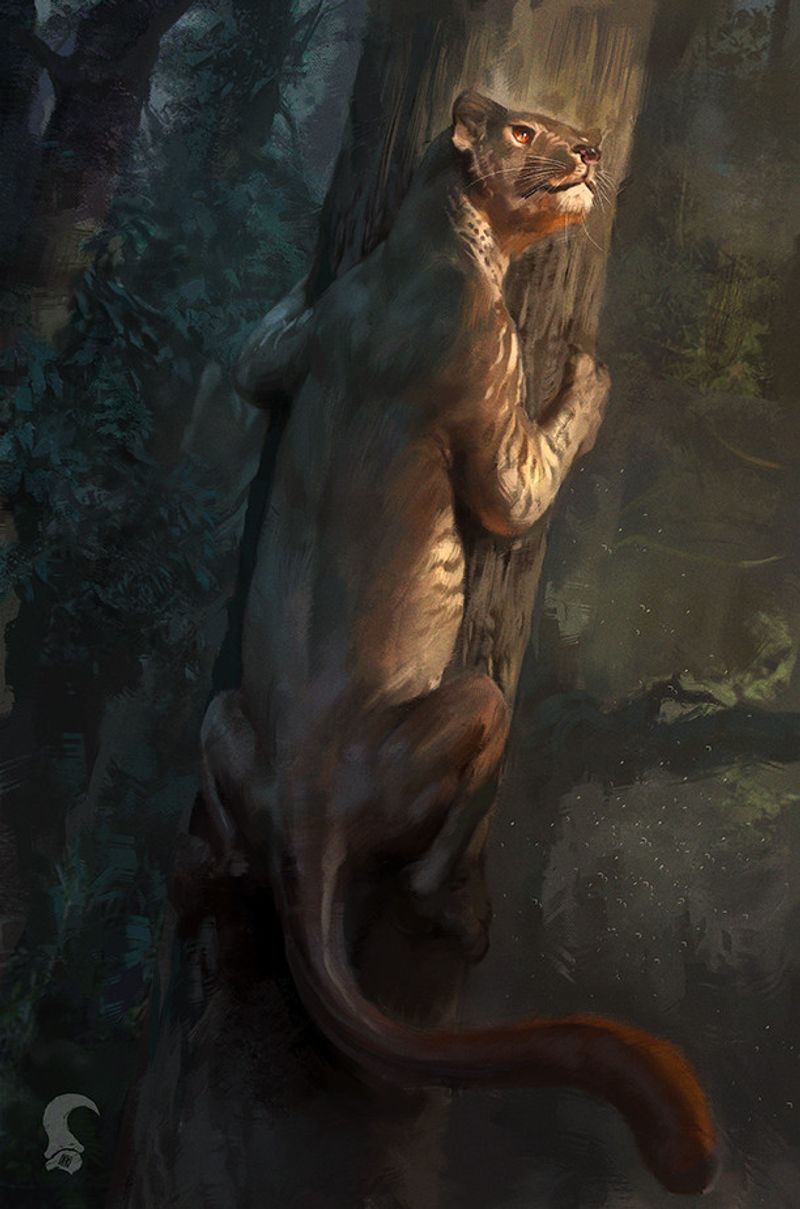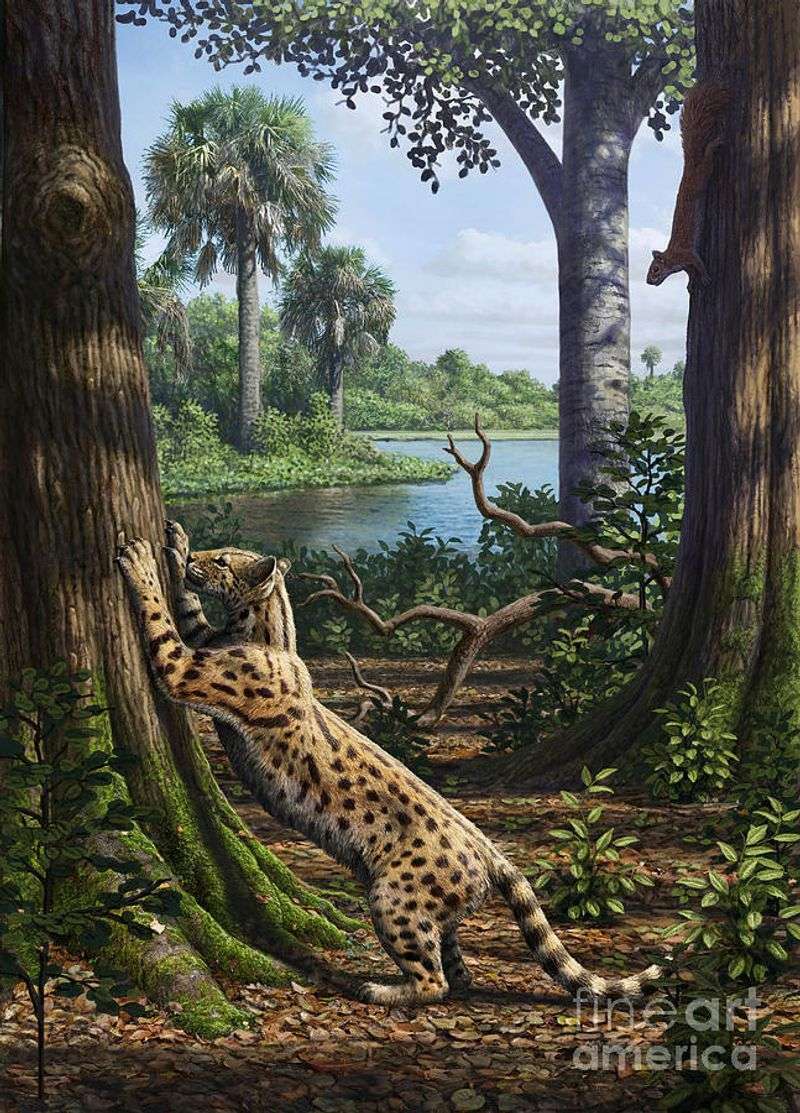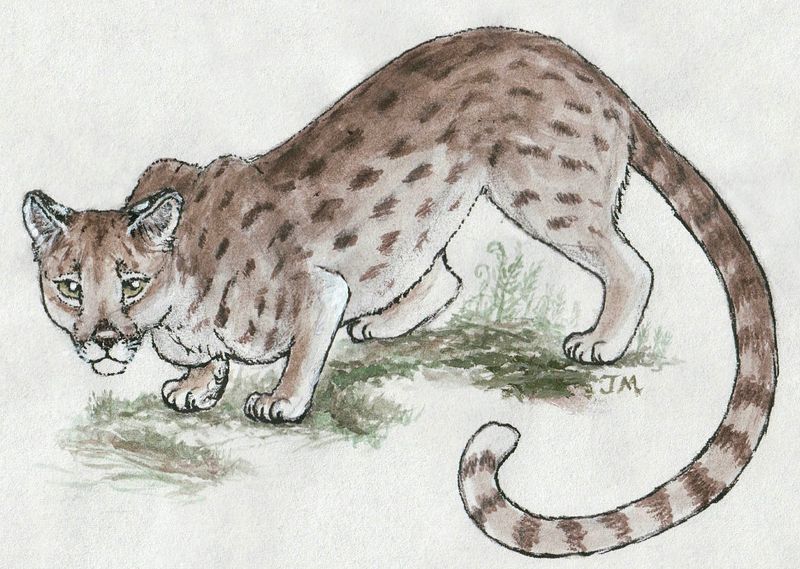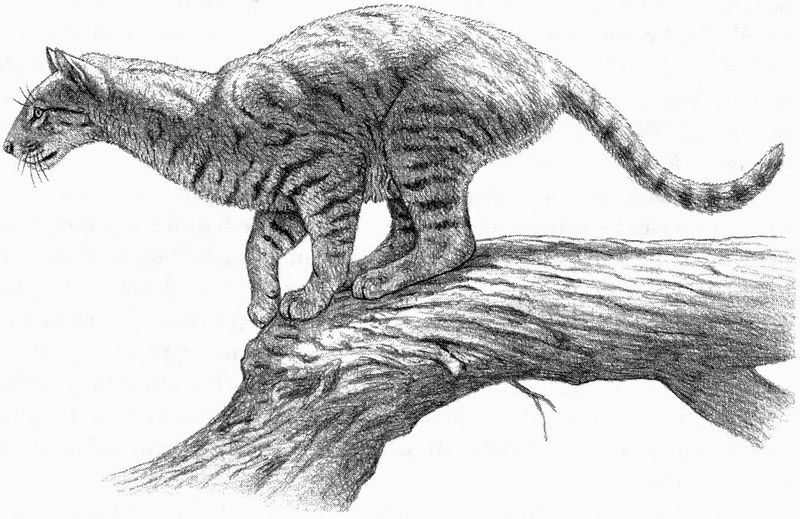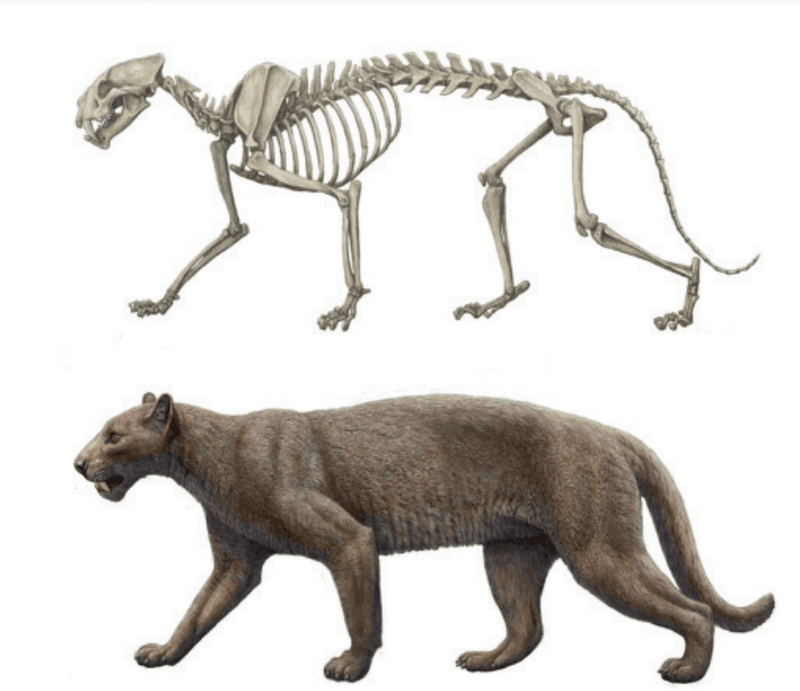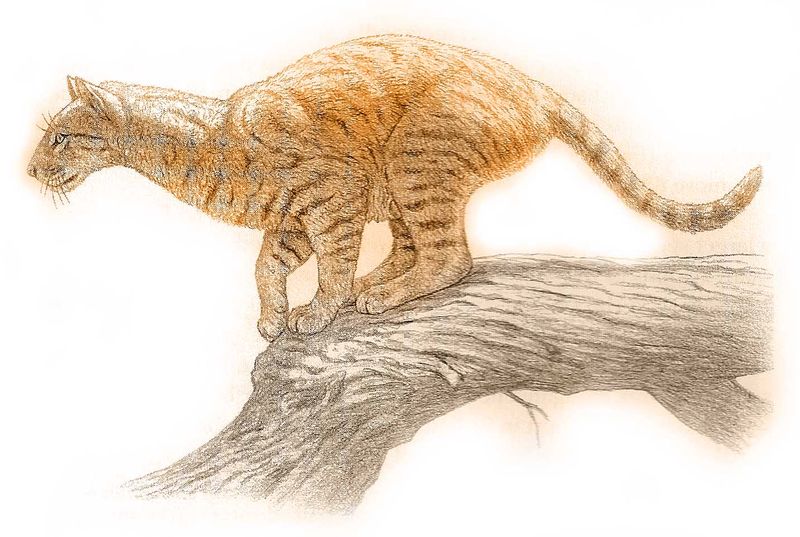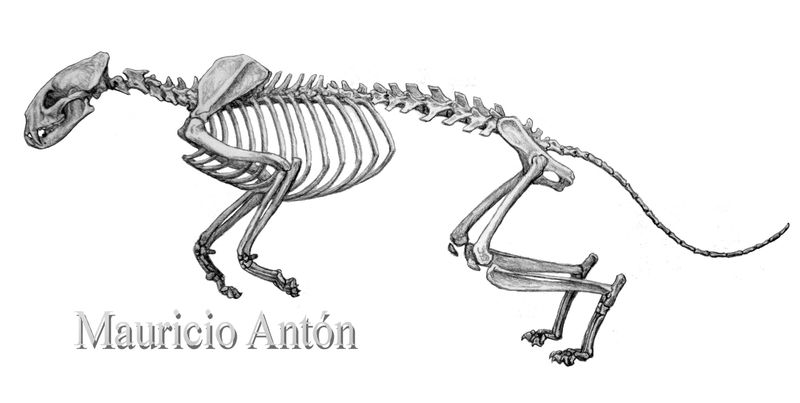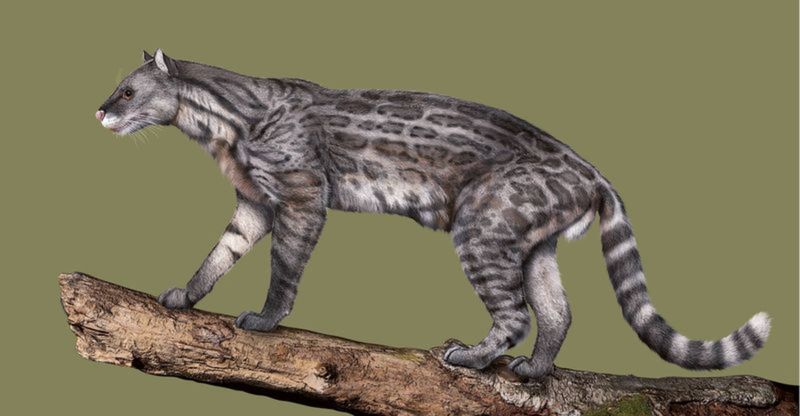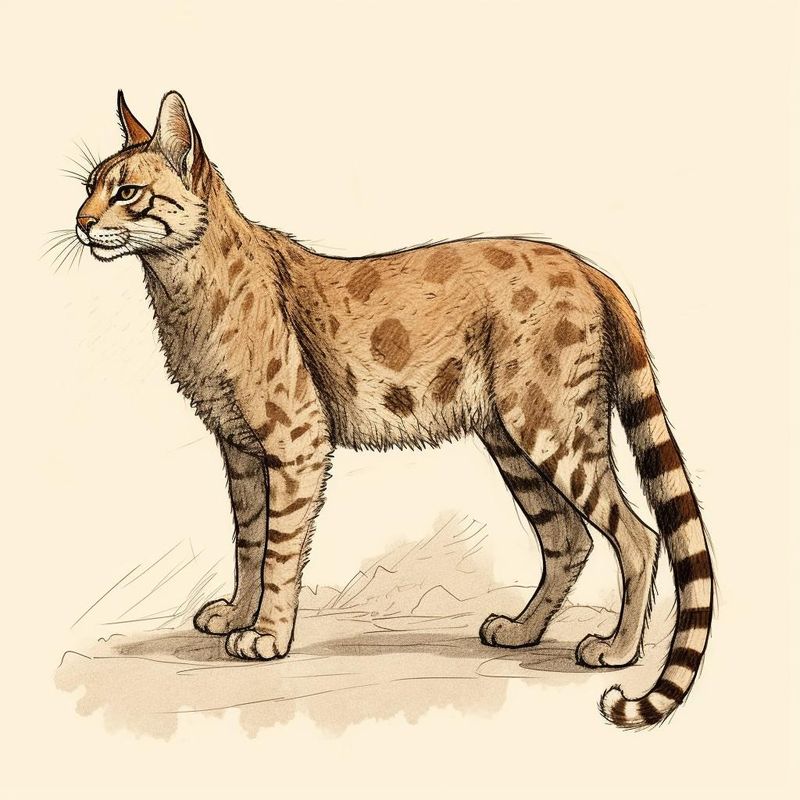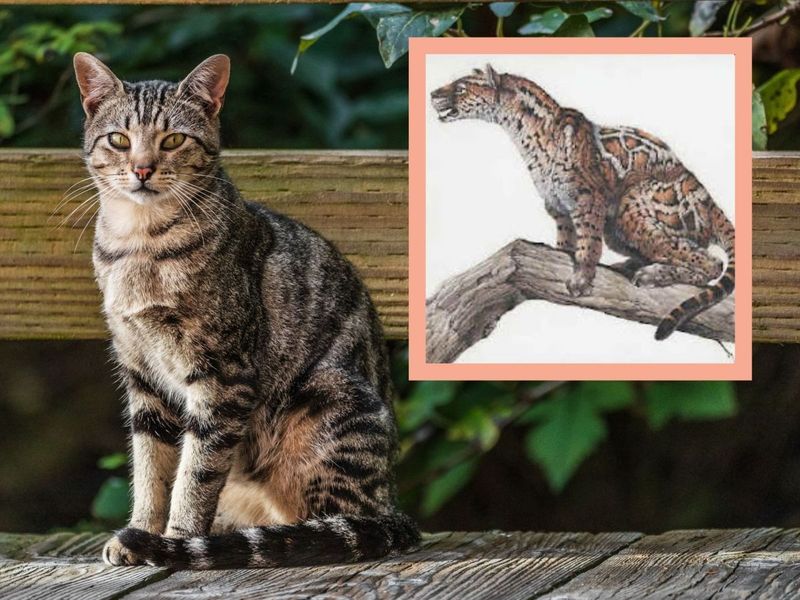📖 Table of Content:
Embark on a journey through time with Proailurus, the herald of the feline lineage. Existing 25 to 30 million years ago, this remarkable creature lived during the Oligocene and Miocene epochs, gracing the prehistoric landscapes of Europe and Asia. With its unique blend of ancestral traits, Proailurus represents the dawn of the Felidae family, offering a captivating glimpse into the early evolution of cats. Explore these ten fascinating insights about Proailurus, uncovering its life, habitat, and indelible impact on the felid family tree.
1. Size and Appearance
What did the world’s first cat look like? Proailurus was a compact and agile predator, slightly larger than today’s house cat. Weighing around 20 pounds, it boasted a long tail, ideal for balance, and large eyes that likely enhanced night vision. Its sharp claws and teeth were perfect for catching prey, reminiscent of modern viverrids. This physical prowess painted the portrait of an adept hunter, perfectly adapted to its environment. Proailurus combined ancestral features with feline grace, offering an evolutionary bridge to the felines we cherish today.
2. Habitat and Lifestyle
Imagine a dense, prehistoric forest; this was the home of Proailurus. Thriving in the woodlands of ancient Europe and Asia, it was well-suited for a life amidst trees and underbrush. Its arboreal nature meant it likely spent time climbing and resting in trees, escaping ground predators and hunting arboreal prey. Living in such a diverse ecosystem required adaptability, allowing Proailurus to flourish in its habitat. This arboreal lifestyle not only provided safety but also access to a variety of prey, highlighting its role as a versatile predator.
3. Diet and Hunting Techniques
Proailurus was a master of opportunity, a trait essential for survival. As an opportunistic predator, it feasted on small mammals, reptiles, and birds. Its teeth, adapted for shearing flesh, paired with sharp, retractable claws, made it a formidable hunter. Moving silently through its forest home, Proailurus could ambush unsuspecting prey with precision. This diet speaks to its adaptability, a necessary trait in the ever-changing prehistoric world. By capitalizing on available resources, Proailurus thrived, securing its place in the evolutionary tapestry.
4. Evolutionary Significance
Proailurus wasn’t just any mammal; it was a pioneer. As the earliest known member of the Felidae family, it stands as a transitional species between primitive carnivorans and specialized felines. Its evolutionary significance cannot be overstated, as it bridges critical gaps in the feline family tree. Understanding Proailurus provides insight into the evolutionary advancements that led to diverse modern felines. This genus laid the foundations for future cats, influencing the path of evolution and unraveling mysteries of feline origins.
5. Ancestry and Descendants
Where did Proailurus come from? Its lineage traces back to ancient ailuroids such as Stenogale and Haplogale. Over time, it is believed to have given rise to descendants like Pseudaelurus, which eventually branched into major felid lines, including the great felines and pantherines we know today. This ancestral connection is vital for understanding the evolutionary journey of cats. The progression from Proailurus to diverse feline species exemplifies nature’s ability to adapt and diversify, shaping the majestic creatures that roam our world.
6. Climbing Abilities
Did Proailurus have a secret talent? Indeed, it was an adept climber. Spending time among the branches, it hunted arboreal prey like lizards and birds. These climbing skills provided a vantage point for spotting prey and avoiding ground-bound threats. Proailurus’s arboreal prowess highlights its adaptability and survival instincts, crucial for thriving in dense woodlands. This ability to maneuver through trees not only ensured its safety but also expanded its hunting grounds, showcasing a remarkable blend of agility and cunning.
7. Fossil Discoveries
How do we know about Proailurus? Fossil evidence provides the answers. Paleontologists have uncovered its remains in regions like Mongolia, Germany, and Spain. These discoveries offer invaluable insights into its existence and the environment it inhabited. Fossils act as time capsules, revealing the physical characteristics and lifestyle of Proailurus. Each discovery adds a piece to the puzzle, deepening our understanding of this early feline and its role in prehistoric ecosystems. These findings illuminate the past, allowing us to explore ancient worlds.
8. Classification and Discovery
Proailurus’s name, meaning “before the cat,” reflects its pioneering status. First described by Henri Filhol in 1879, the fossils were discovered in France’s Saint-Gerand site. This classification marked a significant step in understanding feline evolution, highlighting Proailurus’s place in the ancient world. Filhol’s work laid the foundation for future paleontological explorations and classifications. By recognizing Proailurus’s unique position, scientists gained a deeper appreciation for the evolutionary journey of cats, unraveling the intricate history of these remarkable animals.
9. Physical Characteristics
Proailurus possessed a suite of physical traits that defined its prowess. With a long tail for balance, large eyes for keen night vision, and sharp, retractable claws, it was a formidable hunter. These attributes are akin to those of modern viverrids, emphasizing its adaptability and effectiveness as a predator. Proailurus’s physical characteristics paint a picture of an agile and capable feline ancestor, bridging the gap between early carnivorans and the specialized cats that followed. Its anatomy reveals the evolutionary traits that persist in today’s cats.
10. Extinction and Legacy
Though Proailurus became extinct approximately 20 million years ago, its legacy endures. As a significant link in the evolutionary chain, it paved the way for the felines that fill our world today. Its extinction marked the end of an era, but its evolutionary contributions continue to shape the future of felids. Proailurus’s influence is seen in the adaptability and diversity of modern cats, underscoring the enduring impact of this ancient species. This legacy is a testament to the resilience and evolutionary prowess of early felines.
